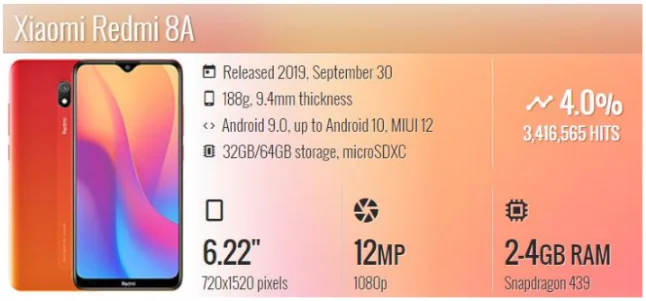Detecting fake devices isn’t as easy as it used to be.
There was a time when the red flags used to be clearly visible – random clicks at odd hours or sudden traffic spikes from unfamiliar regions. Those patterns made it simple to tell when bots were at play.
But fraudsters have now become smarter. Instead of relying on easily traceable bot behavior, they now use sophisticated techniques to spoof impressions and pretend to be real users on real devices. This next-level masking of fake devices as real is known as device spoofing, and it’s quietly reshaping how ad fraud hides in today’s campaigns.
Unlike traditional bot traffic, spoofed devices mimic genuine user behavior so well that standard validation platforms struggle to tell them apart. The result? Campaign dashboards that look real but are actually filled with fake interactions.
What is Device Spoofing? Techniques Used for Device Spoofing
Device spoofing is a sophisticated ad fraud technique where fraudsters disguise fake, old, or low-quality devices to appear as genuine, tricking marketers into counting them as real users. Common device spoofing techniques include:
Geo-Location Manipulation
Fraudsters spoof GPS coordinates or use proxies/VPNs to mimic users from premium regions. This helps them access high-value audiences and inflate campaign reach in targeted geographies without using real devices.
Simulated or Fake Devices
Fraudsters alter device IDs, OS versions, screen resolutions, or hardware profiles to make outdated or non-existent devices appear new, authentic, and high performing.
Browser Spoofing
They alter browser fingerprints, including headers, plugins, versions, and configurations, enabling fake environments to perfectly mimic real browsers and bypass platform-level verification or anomaly detection systems.
User Agent String Manipulation
Fraudsters manipulate technical details like device IDs, operating system details, user-agent strings, browser information, etc., making it difficult for ad platforms to detect them as fake devices.
This means, while you believe your ads are reaching real people, a portion of that ‘audience’ might actually be nonexistent, generating fake impressions.
In a recent case, our tool detected a surge of ad impressions coming from devices supposedly running on Android OS 6. On the surface, that seemed fine until our system cross-checked the actual device model metadata.
It turned out that these devices were originally released with Android 9, supporting upgrades to Android 10 or 11.

This technical mismatch, an outdated OS appearing on a newer model, was a clear red flag. It revealed that fraudsters had manipulated the device identity to make fake traffic appear genuine, hoping to slip past standard detection systems.
Why Marketers Need to Validate Device IDs in Their Campaigns?
Device IDs and user-agent strings are two of the earliest signals that define “who” your ads are actually reaching. Device spoofing doesn’t just manipulate campaign data because when these signals are manipulated, everything built on top of them becomes unreliable. Here’s how:
Device IDs are the backbone of attribution, frequency & measurement
Device IDs determine how platforms track reach, frequency, and conversions. When fraudsters spoof or rotate them, one device appears as hundreds of unique users. As a result, frequency caps stop working, and attribution becomes inaccurate. Marketers unknowingly pay more to reach fewer real users because the foundational identity signal is corrupted from the start.
User-agent strings validate whether a device ID is plausible
A device ID is easy to fabricate, but a user-agent string provides context about OS, browser, and device type. When these don’t match, like a new device running an outdated OS or many IDs sharing the same UA, it signals synthetic traffic. UA validation helps separate real devices from scripted environments.
Unchecked device IDs pollute media optimization & audience models
Fake device IDs contaminate remarketing pools, distort lookalike audiences, and push automated bidding systems toward non-human traffic. Over time, targeting becomes less accurate and more expensive, even if campaign metrics appear stable. The performance engine quietly drifts away from real customers because its learning data comes from manipulated or spoofed identities.
Device & user-agent inconsistencies reveal impression-level fraud early
Device and UA metadata are available from the first impression, making them valuable for early fraud detection. Mismatches in OS versions, device lifecycle, browser type, or session stability quickly expose spoofed devices. Identifying these inconsistencies upfront prevents downstream wastage and protects campaign performance before budgets begin to leak.
This helps marketers ask better questions
Understanding device IDs and UA signals helps marketers challenge suspicious reach spikes, inconsistent delivery, or unexplained traffic patterns. It encourages smarter conversations with publishers and reduces reliance on surface-level KPIs like CTR. In an ecosystem full of manipulated traffic, signal literacy becomes a strategic advantage for protecting ROI and improving transparency.
Therefore, advertisers need advanced ad fraud detection solutions like Valid8 by mFilterIt to protect their ads from device spoofing. Our tool helps validate device IDs, user-agent strings, and impression-level signals in real time.
This enables the marketer to take investment decisions with confidence and ensure their ads reach the right audience.
For more information, contact our experts.




